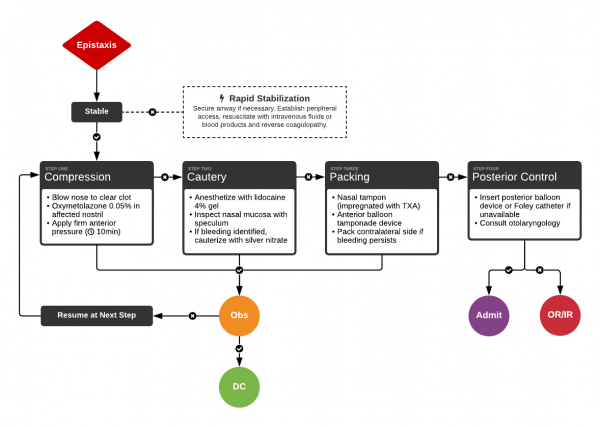Revision Resources
Recent Posts View All
November 2018 FOAMed
Epistaxis

63 year-old female with a history of hypertension, diabetes, and deep venous thrombosis on warfarin presents with epistaxis. She noted the spontaneous onset of nose bleeding 15 minutes prior to presentation. She had attempted compression but symptoms persisted so she was brought to the emergency department. On initial evaluation, she was in no acute distress and vital signs were normal. She was compressing her distal nares and was spitting up blood.
EM Boards Survival Guide: Neurology 1

Welcome back to the EM Boards Survival Guide! This emDocs series will provide you with regular tips and must-know items for EM boards and in service. Each post will feature several key takeaways on a specific organ system. This week we cover neurology.
The Tamiflu Debacle

Tamiflu was approved by the FDA in 1999. The majority of the evidence supporting the use of the medication came from trials funded by Roche, the maker of the drug. In 2009 the Cochrane collaboration began to question Roche about the completeness of the data they were using, which was data from another meta-analysis with 10 RCTs. Only 2 of those RCTs were published in peer-reviewed journals.
Approach to the sick cirrhotic patient

It is 1am, and emergency medical services (EMS) calls and states that a 45-year-old male with massive hematemesis is being transported to the emergency department (ED). He is unstable per report. EMS has achieved peripheral intravenous (IV) access. Since the patient is reported to be unstable, you begin to prepare the resuscitation room. The patient arrives and he appears very ill. You immediately assess the patient’s airway, breathing and circulation (ABCs). A nurse establishes a second IV line as soon as the patient is transferred to the ED bed. The patient appears cachectic with a protuberant abdomen.
Toxic Alcohols

We see patients with toxic alcohol poisoning most commonly in three clinical scenarios. One, which is usually relatively straightforward, after an intentional suicide attempt where they tell you exactly what they took; the next scenario is a bit more challenging – when they come in agitated and won’t give you a history and the third – also very challenging – the inebriated patient found down. Alcohol is everywhere, and inevitably inebriated people show up at your ED with a myriad of medical and psychiatric problems – we’re all familiar with these patients.
Are you sure you wish to end this session?

